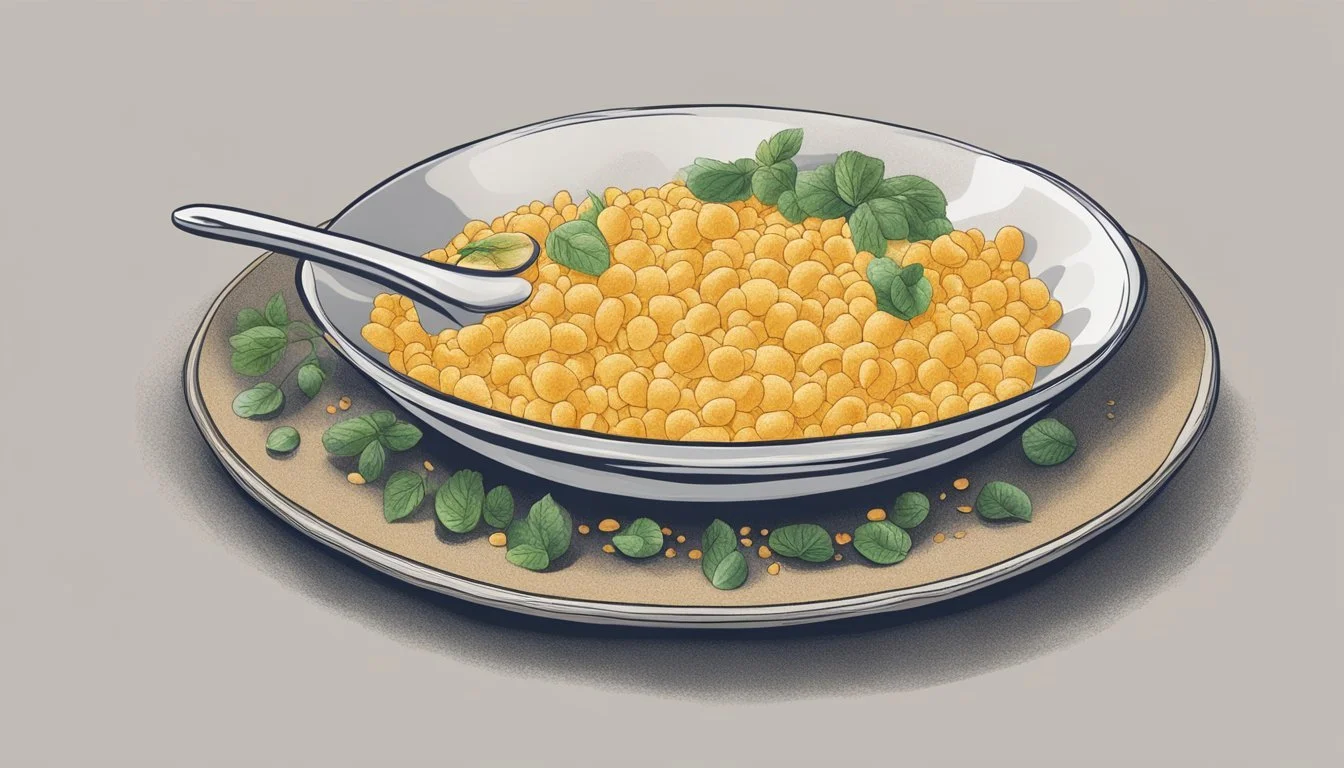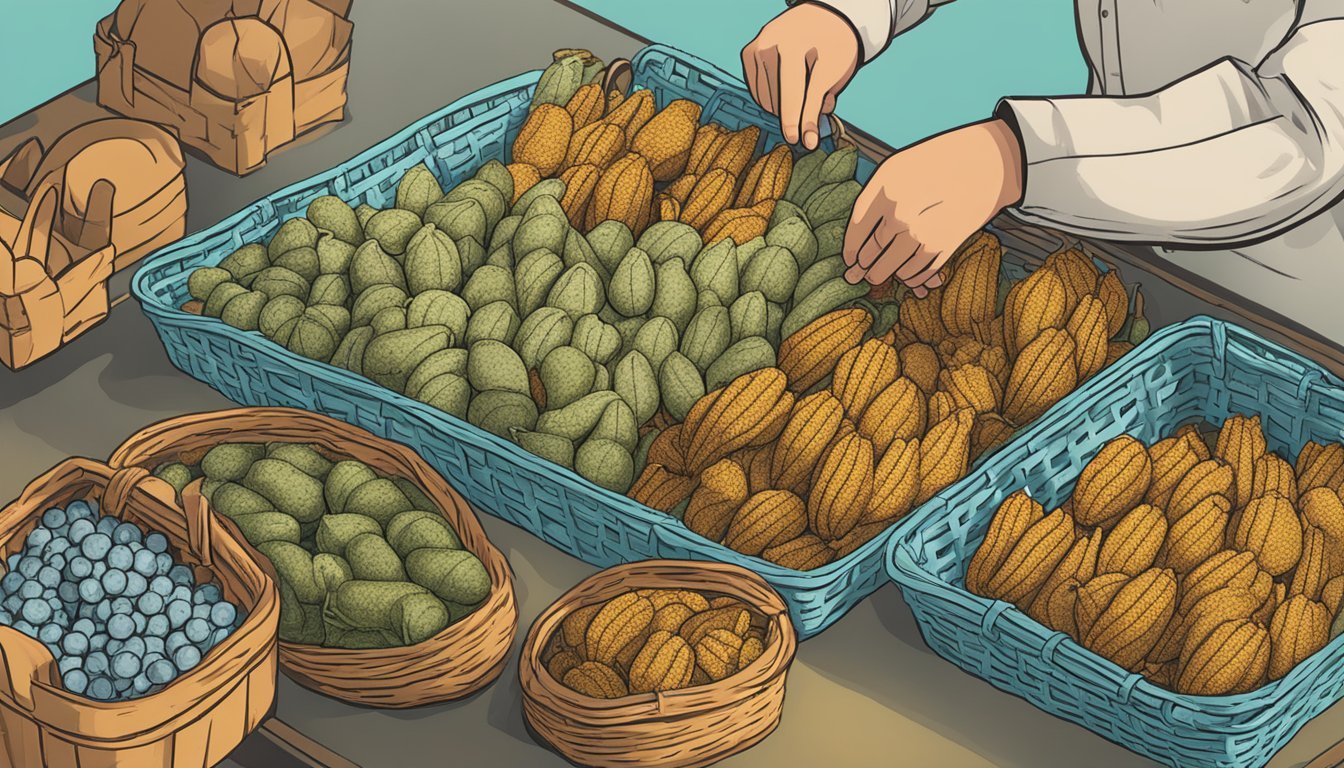Eddoe Substitutes
Top Alternatives for Cooking and Nutrition
Cooking with eddoe roots can add a unique flavor and texture to various dishes, but sometimes it may not be available in your local grocery store. When looking for substitutes for eddoe, ingredients like taro, malanga, and even potatoes can serve as good alternatives. Each of these substitutes brings different flavors and textures to your recipes, making them versatile options to consider.
Taro, like eddoe, has a nutty and starchy quality that fits well in stews, soups, and curries. If you're looking for a less acrid option, malanga root is another excellent substitute. Malanga offers a softer, creamier texture, making it suitable for dishes that require a smoother consistency. For a more common and easily found alternative, potatoes can work in many recipes, although they lack the distinctive flavor profile of eddoe.
Choosing the right substitute depends on how you plan to use it in your dish. For frying or stir-frying, malanga and taro both mimic the crispy texture of eddoe, while for purees or soups, potatoes can provide the required thickness and moisture. Each substitute has its own distinct characteristics, ensuring that your dish still retains a unique and delicious taste.
Overview of Eddoe
Eddoe, closely related to taro, is a tropical vegetable known for its culinary versatility and cultural significance. Primarily used for its thickened stems, eddoe is a staple in various cuisines.
Cultural Significance
Eddoe has deep roots in various cultures, particularly in Southeast Asia, Southern India, and the Caribbean. In these regions, it is celebrated not just as a food item but as a culinary tradition. In Trinidad & Tobago, eddoes are often consumed during Divali festivities, embodying cultural and communal values. Its use in traditional dishes underscores its importance in maintaining cultural heritage.
Eddoe is also prominent in Caribbean and African-American cooking, where it is often included in stews and soups. The plant's ability to thrive in moist, warm climates makes it well-suited to these regions, hence its prevalent use.
Eddoe as a Dietary Staple
Nutritionally, eddoe is comparable to potatoes. It is high in carbohydrates and dietary fiber, making it a good energy source. One cup of eddoe provides 116 calories, 23 grams of net carbs, nearly 2 grams of protein, 4 grams of dietary fiber, and less than 1 gram of fat. It also offers significant vitamins and minerals, including vitamin B6, vitamin E, and calcium.
Due to its nutritional profile, eddoe is often recommended in diets needing complex carbs and fiber. Its distinct nutty flavor and versatility in cooking methods, from boiling to frying, ensure it remains a staple in many people's diets.
Nutritional Profile of Eddoe
Eddoes are nutrient-rich tubers, offering various vitamins, minerals, and dietary fiber. They are similar to other root vegetables but stand out with unique health benefits and culinary uses.
Health Benefits
Eddoes contain several essential nutrients. One cup provides 116 calories, 23 grams of net carbs, 2 grams of protein, and 4 grams of dietary fiber. This makes them a good energy source while aiding digestion with fiber.
Vitamin B6 and vitamin E are prominent in eddoes. One cup offers 23% of the RDA for vitamin B6 and 20% for vitamin E. This supports brain health and skin health, respectively.
Eddoes also contain vitamin C, contributing to immune support. High potassium levels help maintain healthy blood pressure levels. This, in turn, reduces the risk of heart disease.
Overall, the nutritional composition of eddoes makes them a valuable addition to a balanced diet.
Common Eddoe Substitutes
When cooking, finding the perfect substitute for eddoe is key to maintaining your dish's flavor and texture. Common alternatives include root vegetables and grains & legumes, each offering unique characteristics suitable for various recipes.
Root Vegetables
Taro: With its starchy texture and nutty flavor similar to eddoe, taro is frequently used in stews, soups, and curries. It offers a comparable taste profile and consistency, making it a reliable substitute.
Malanga: Known for its slightly earthy flavor, malanga can replace eddoe in most dishes, from soups to casseroles. It has a fibrous texture that holds up well during cooking, ensuring a similar eating experience.
Yautía: Similar in appearance and use to eddoe, yautía works well in soups and fried dishes. Its robust flavor and firm texture make it a versatile replacement.
Grains and Legumes
Chickpeas: Though a different category, chickpeas offer a firm texture and mild flavor, making them a suitable substitute in stews and soups. They also add a good dose of protein.
Lentils: Lentils can mimic the consistency of eddoe when cooked. They are perfect for soups and thicker stews, providing a hearty texture and ample nutrients.
Quinoa: For a grain substitute, quinoa offers a different but agreeable flavor. It's excellent in dishes where a nutty taste and a firm bite are desired, making it a versatile eddoe alternative.
Cooking and Preparation
Eddoes can be prepared using traditional methods that highlight their unique texture and flavor. Modern techniques also offer new and exciting ways to cook this versatile root vegetable.
Traditional Methods
Boiling is a common traditional method for cooking eddoes. To start, scrub the eddoes thoroughly to remove any dirt. Place them in a large pot of salted water. Boil until they are tender, typically about 30-40 minutes. Test doneness by piercing with a fork; it should go through smoothly. Once boiled, they can be peeled and used in various dishes or simply mashed and seasoned.
Another traditional method is frying. After boiling and peeling, slice the eddoes and fry them in hot oil until they are golden and crispy. This method is often used to make eddoes choka, a dish popular in Caribbean cuisine. Mash the boiled eddoes with sautéed onions, garlic, and pepper until it has a smooth consistency.
Modern Cooking Techniques
In modern kitchens, eddoes are frequently prepared using techniques like roasting and air frying. For roasting, preheat the oven to 400°F (200°C). Toss peeled and cubed eddoes with olive oil, salt, and your choice of herbs. Spread them evenly on a baking sheet and roast for 30-35 minutes until they are crispy outside and tender inside.
Air frying is a healthier alternative to traditional frying. Preheat the air fryer to 375°F (190°C). Coat the eddoes lightly with oil and arrange them in a single layer in the air fryer basket. Cook for about 20-25 minutes, shaking the basket halfway through until they are evenly crisped. This method reduces oil usage while still delivering a deliciously crispy texture.
Each technique brings out different aspects of the eddoes' flavor and texture, providing versatile options for incorporating this root vegetable into various dishes.
Integration in Various Cuisines
Eddoes are versatile and can enhance a wide range of dishes across different cultures. They are especially prominent in Asian and Caribbean cuisines, integrating smoothly into traditional recipes.
Asian Cuisine
In Southeast Asian cuisine, eddoes are appreciated for their subtle nutty flavor. They often replace taro in dishes where a less earthy taste is desired.
Eddoes are common in Japanese tempura, where their texture pairs well with the light, crispy batter.
In Chinese cuisine, eddoes are used in soups and stews, complementing meats like pork and chicken. They bring a nutty undertone without overpowering the dish.
In Indian cuisine, eddoes can be found in curries and bhajis, where they absorb the rich spices.
Caribbean Cuisine
Eddoes play a significant role in Caribbean culinary traditions, thriving in the region's climate.
In Trinidad and Tobago, eddoes are a staple in traditional soups and callaloo, a dish made with leafy greens and coconut milk.
Jamaican cuisine incorporates eddoes in various side dishes and stews, blending well with other root vegetables like yams and sweet potatoes.
In Cuban cuisine, they find their place in hearty soups like ajiaco, a stew made with multiple meats and root vegetables.
Eddoes' adaptability in Caribbean dishes reflects the rich, diverse food culture of the region.
Substitute Impact on Dish Texture
Eddoe substitutes, including potatoes, taro, and yams, vary greatly in how they affect the texture of dishes. The choice of substitute impacts consistency, mouthfeel, and moisture content in both savory and sweet recipes.
Desired Consistencies
Potatoes: They become very soft and fluffy when cooked, which makes them suitable for creamy soups and mashed dishes. Their high starch content results in a smoother texture compared to eddoes.
Taro Root: Taro has a dense, fibrous texture that stays firm even after cooking. This makes it ideal for recipes where a starchy, chewy consistency is desired. It’s less creamy but can add a unique structure to stews and casseroles.
Yams: Yams provide a moist and slightly stringy texture when cooked. This quality can add a hearty consistency to various dishes, such as stews and baked goods. They retain their shape better than eddoes, adding a firm bite to salads and side dishes.
Sweet Potatoes: Sweet potatoes tend to break down into a smooth, creamy consistency. This makes them a great substitute in purees and baked desserts, offering a silky mouthfeel similar to eddoes.
Bold text for better emphasis can highlight important traits: Potatoes - fluffy, Taro - firm, Yams - moist, Sweet Potatoes - creamy.
Select substitutes based on the desired consistency to achieve the best texture profile in your dish.
Taste Comparisons
When choosing a substitute for eddoe, it's essential to consider the nuanced differences in flavor profiles. Various root vegetables can offer unique textures and tastes that may complement different recipes.
Flavor Profiles
Eddoe has a nutty flavor and a fibrous texture. It is often used in stews and soups, where its subtle taste can complement robust seasonings.
Taro, on the other hand, boasts a creamy texture and a slightly sweet, earthy flavor. Ideal for dishes like poi or curries, it integrates well and adds a mellow sweetness to recipes.
For a milder substitute, yams can be considered. They offer a lightly sweet flavor with a starchy texture that works well in similar dishes to those using eddoe.
Sweet potatoes have a sweeter and more potent flavor compared to eddoe but can be a good alternative in dishes requiring a richer taste. Its creamy texture can add a smooth finish to soups and pies.
Overall, while each substitute has its own distinctive taste and texture, understanding these differences can help in choosing the best replacement for eddoe in various recipes.
Potential Allergies and Dietary Restrictions
Eddoes, also known as taro root, can be a nutritious addition to many diets but may pose risks for individuals with certain allergies and dietary restrictions. It's important to be aware of these potential issues to ensure safe and enjoyable consumption.
Common Allergens
Individuals may experience allergic reactions to eddoes, similar to those seen with other root vegetables. Symptoms can include itching, swelling, and gastrointestinal issues. Saponins, naturally occurring compounds in eddoes, might trigger these reactions.
Histamine intolerance could also be a concern, as eddoes might contain histamines or trigger their release. It's advisable for people with known histamine intolerance or allergies to consult with a healthcare provider.
For those with a sensitivity to oxalates, eddoes should be consumed with caution. Oxalates can interfere with calcium absorption and may contribute to kidney stones in susceptible individuals. Cooking methods like boiling can reduce oxalate content in eddoes.
Finding Quality Substitutes
Identifying the best eddoe substitutes involves understanding both the brand and the weight of the available options. This ensures the chosen substitute will perform similarly in culinary uses.
Selecting the Right Brand
The brand of a substitute can greatly influence its quality and suitability. Trusted brands often maintain consistency in texture and flavor, which is crucial when substituting an ingredient like eddoe. Some renowned brands known for their high-quality root vegetables include Melissa's Produce, Growers Direct, and Yukon Harvest.
When selecting a brand, consumers should consider:
Reputation for freshness: Brands with a track record of delivering fresh produce are preferable.
Quality control: Consistent quality control measures ensure that the substitute matches the expected characteristics of eddoe.
Availability: It's also important to choose brands that are easily accessible in your region or through reliable online platforms.
Understanding Yarn Weight
Although yarn weight might seem unrelated, it can be relevant when considering the density and weight of root vegetable substitutes. Heavier or denser substitutes will mimic the eddoe's texture and cooking properties better.
Key points about weight to consider:
Density: A denser substitute like taro or coconut yam can match the hearty texture of eddoe.
Cooking properties: Lighter substitutes, such as turnips, might need adjustments in cooking time to achieve the desired texture.
Specific recipes: It's important to understand the weight characteristics of the substitutes to ensure they don't alter the final dish.
By paying attention to both brand and weight, cooks can make informed choices that preserve the integrity of their recipes.










